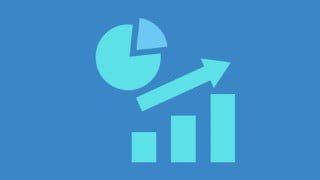Introduction to Statistics for nonmathematicians
Learn the basic concepts of statistics, descriptive analysis, estimation of parameters, t-tests, ANOVA, correlation analysis, and linear regression. Suitable for students, analysts, professionals, entrepreneurs, and managers in various domains. Upgrade your data interpretation skills for better decision-making.
What you’ll learn
- To understand and use correctly the basic concepts of statistics
- To perform the descriptive analysis of data
- To estimate statistical parameters in the population
- To perform comparisons between two or more groups using t tests and ANOVA
- To perform comparisons between two or more sets of repeated measures using t tests and ANOVA
- To understand and perform correlation analysis of data
- To build simple and multiple predictive models using linear regression
In this course you will learn about: basic concepts of statistics (quantification, variables & constants, samples, and populations, randomness, and representativeness, parameters and statistics, units of analysis, databases), scales of measurement (the nominal, the ordinal, the interval, and the ratio scale) and types of variables (continuous & discrete, parametric & nonparametric), how to convert one type of scale into another, basic description of the data (mean, median, mode, range, variance, standard deviation), theoretical & real distributions, standardization (the Z scores), the normal distribution and its properties, hypothesis testing, the probability of the null hypothesis, the Z test, the t-test and the t distributions, the confidence intervals, the independent samples t-test, the repeated measures t-test, the Analysis of Variance (ANOVA) for independent samples and repeated measures, the Pearson correlation, the simple and the multiple linear regression.
In all presentations, the focus is moved from mathematical aspects to basic principles behind each statistical procedure, so that each topic is very easy to understand. The rhythm of the presentation is well calibrated to facilitate the understanding of each new concept.
Each section is followed by several exercises in which you can consolidate your newly acquired knowledge. In addition, you will receive for each section the tables with critical values for your statistical indicators and a document with all exercises resolved to check if you work correctly.
Good luck on your way to becoming an expert in Statistics!
Who this course is for:
- Students in different domains such as psychology, sociology, business, data science, economics, marketing, anthropology, medicine, engineering and others
- Future marketing analysts, business intelligence analysts, data analysts, or data scientists
- Professionals in different domains who want to acquire new competences that will take them to a superior level in their career.
- Entrepreneurs and managers who want to upgrade their ability to interpret data in such way that risks and opportunities become more obvious
User Reviews
Be the first to review “Introduction to Statistics for nonmathematicians”
You must be logged in to post a review.







There are no reviews yet.